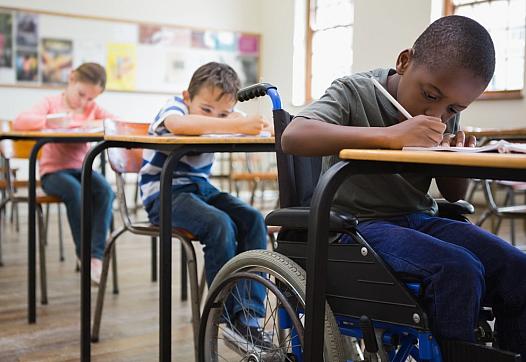The aging out process and support systems for adults with disabilities
The story was originally published in Spokesman Recorder with support from our 2023 National Fellowship's Dennis A. Hunt Fund for Health Journalism.

Photo by alexandre saraiva carniato on Pexels.com
This is the second of a two-part story
Aging out and the support systems
Once adults with disabilities start to age out, if they’re enrolled in transition services, the staff starts to make the gears turn for the next steps. Toward the end, they sit you down in a final IEP meeting and go over the next steps for each person and their recommendations. The aging out process is the first real step into adulthood, but it looks different for everyone.
Kelsey Joson who runs InControl-MN started her business after she became passionate about helping adults with disabilities. She grew unsatisfied with the services and the quality of life adults with disabilities had so she started her company.
InControl provides in-home preventative wellness services for people with intellectual and developmental disabilities. She discussed her company’s work and the aging-out process.
“We have a team of coaches that go into our client’s homes and we exercise with them, cook with them in the kitchen, working on some independent living skills. And also we provide a coach to develop some social emotional wellness as well. The overall goal is to is to help adults with disabilities be able to live independently as much as possible through the lens of wellness and take care of themselves.”
“When they turn 21 and 22 and start to age out of transition programs, a lot of times there’s a huge gap in services. And so where they might have been learning all of these different things of how to take care of themselves and whatever, there’s usually not a lot of education that comes along with the services.”
“Once they turn 21, it’s the school system and the parents or guardians’ job to really find what’s next for them and what that looks like in terms of the funding system that they’ve set up.”
Some of the services and waivers that need to be applied for and setup are:
- Medical Assistance: Minnesota’s Medicaid program for people with low income
- SSI/SSDI: SSI payment is $636.69 a month and SSDI is $1,350.71 a month
- CADI waiver: A program that provides home and community-based services to children and adults with disabilities that are an alternative to institutionalization. The services help a person live as independently as possible in community settings and promote optimal health, independence, safety, and community integration
- Developmental Disability waiver: Provides funding for home and community-based services for children and adults with developmental disabilities or related conditions
- CDCS waiver (Consumer-directed community supports waiver): This is a service option for people with disabilities that allows them the flexibility and responsibility to tailor services and supports to their unique needs.
- Vocational Rehabilitation for People with Disabilities: Counseling, training, job skills, and job placement services
One of the big decisions in transitioning past 22 is where to live. There are a few options people with ASD can choose for housing. And although a large percentage of people with ASD live with aging parents and family, these are still options that many choose.
Some of the other options are supervised living, group homes, apartments with minimal supervision, adult foster care, housing stabilization services (a Medical Assistance benefit to help people with disabilities and seniors find and keep housing), Section 8 (although not meant to be specific to disability, Section 8 is an option many folks with ASD choose once they get a waiver), and regular community living.
One of the biggest struggles for folks with ASD is housing. According to Spectrum News, 44% have a legal guardian. Only 9% lived in a home they had purchased themselves or in their own apartment; the same proportion lived in an institution. And 35% live in a group home, supported apartment, or other supervised living situation. The remaining 47% lived with family. The findings appeared in the December 2017 issue of the medical journal Autism Research.
Some of the struggles people with ASD face go beyond housing. Only about 15% of adults with autism who have a college degree are fully employed, but overall, only around 25% of adults with autism are fully employed. Only between 5-9% of adults with autism are married, and only around 32% of adults with autism have a romantic partner.
Beyond the marriage and partnership part, autism usually causes some struggles with social skills. This leads to a lot of isolation and loneliness amongst those on the spectrum. That feeds into the quality of someone’s life.
One of the challenges that needs to be addressed in this country is to look at these issues and work on changing them for future generations. We know where people on the autism spectrum are having the most difficulty, and the schools haven’t done enough to work on these specific problems.
Looking back over the past 25 years from when I was first diagnosed, the public schools I attended didn’t do anything to address these issues around social skills and relationships. If we’re going to build a more healthy society for future generations, these things need to be focused on.
We’ve made a lot of progress from where we were in the 1940s when autism was first discovered. Now is the time to start to work on these issues that affect people with ASD the most. With the number of people with ASD rising and becoming one of the more common learning disabilities, if we don’t address this now, we’re going to do a major disservice to society and all those affected by autism.


